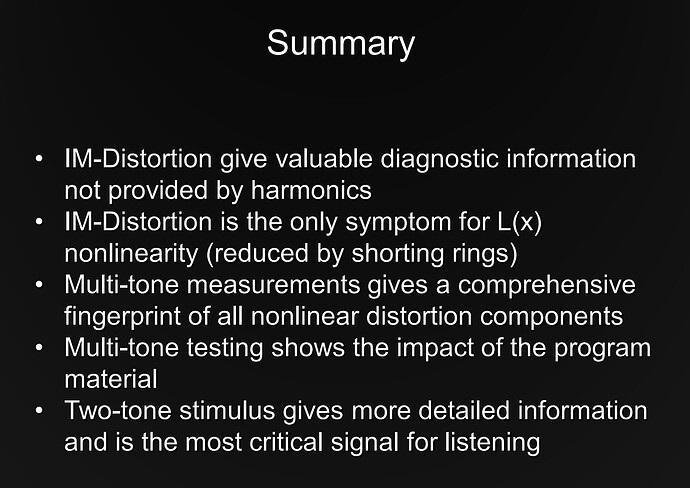Unfortunately the eddy-current ring has a severe limitation as it only compensates the magnetic flux that passes the ring, which is often not more than 50%. Furthermore the effect is frequency dependent … Even though this method is frequently applied in loudspeakers, it is in practice rather useless when applying the loudspeaker in a subwoofer for the frequency range below 100 Hz.
WOW did not know this ! the irony is that it’s usually the subwoofers that have the shorting rings, because subwoofers are the most expensive drivers and can afford to implement this feature.
you don’t typically see shorting rings in cheap drivers except for full-range drivers that need them to extend frequency response.
more papers from the same author:
https://www.rmsacoustics.nl/audiodesign.html
didn’t understand anything but this summary is useful:
translated into English:
1 - Intermodulation Distortion is the only distortion measurement you need.
2 - Inductance Nonlinearity does NOT show up in Harmonic Distortion measurements but does create IM distortion.
furthermore from the previous paper IM distortion is far more audible than even high order harmonic distortion, whereas the low order harmonic distortion ( 2nd and 3rd ) which is more commonly measured is almost completely irrelevant and certainly 2nd harmonic by itself is completely irrelevant unless it is like 100%
on other hand 2nd harmonic is still evidence of nonlinearity which is likely going to cause some kind of IM distortion on other hand lack of harmonic distortion doesn’t mean lack of IM because inductance nonlinearity can cause IM without causing Harmonic Distortion
